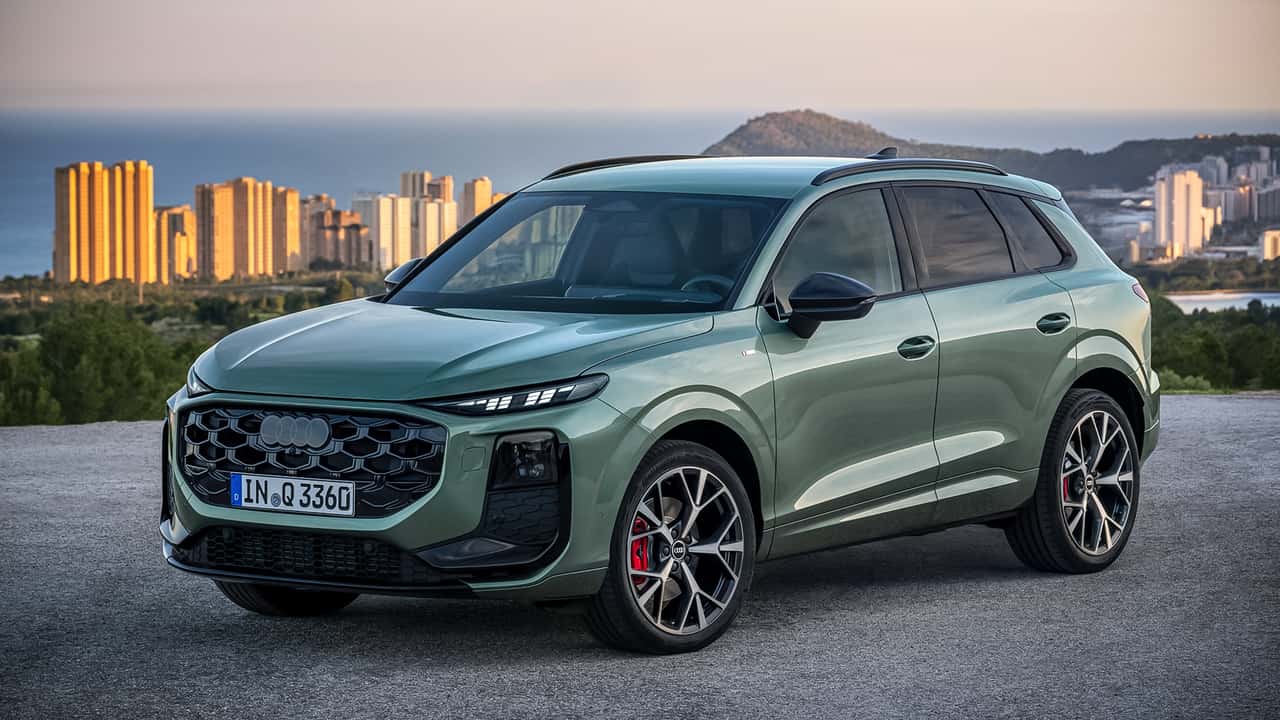Audi Q3 2026 Unveiled with Distinct Lighting and Innovative Gear Shift
Audi is accelerating its vehicle lineup refresh, following the recent launches of the new A5, Q5, A6 E-Tron, and Q6 E-Tron models. Now, the focus shifts to a more compact offering as the Q3 evolves into its third generation. While it competes directly with the BMW X1, the new Q3 brings unexpected enhancements that set it apart in the luxury crossover segment.
Externally, the updated Q3 features distinctive split headlights and taillights—a design choice not adopted by its larger sibling. The upper daytime running lights are prominently visible, while the primary matrix LED headlights are subtly concealed behind tinted glass with sleek black accents. Each headlamp boasts an impressive 25,600 micro-LEDs, each about half the thickness of a human hair, indicating a high-end lighting system that may be costly to maintain.
Refined Rear Design
At the rear, Audi has introduced separated taillights with a lower LED strip complemented by an upper OLED arrangement. Drivers can personalize the rear lighting with six different graphics, achieved by varying the display of 36 segments within the taillights. The design echoes the new A6's styling and includes an illuminated badge to enhance the vehicle's aesthetic appeal.
Streamlined Exhaust and Aerodynamics
In a move towards authenticity, Audi has eliminated faux exhaust tips from the Q3, opting for a cleaner rear bumper design that conceals the actual exhaust outlets. This contrasts with the Q5’s visible dual-exhaust system, suggesting that Audi reserves the sportier exhaust styling for higher-performance variants like the S and RS models. The S Line edition of the Q3 features a smooth diffuser without any vent cutouts, contributing to its sleek appearance.
Exterior and Performance Enhancements
Despite some similarities to the Q5, Audi emphasizes unique design elements in the Q3, particularly in the wheel arches inspired by the original Quattro model. Higher trims are equipped with 20-inch wheels, while the base version comes with 17-inch wheels. The tires have been widened from 215 to 235 millimeters, and the drag coefficient has been improved from 0.32 to 0.30, enhancing both style and efficiency.
Modern Interior Features
The interior of the new Q3 reflects Audi’s latest design philosophy, featuring a fully digital 11.9-inch instrument cluster and a 12.8-inch Android Automotive-powered touchscreen. Unlike previous models, there is no optional passenger display, which may simplify the dashboard layout. The use of touch-sensitive buttons on the steering wheel and the prominent bezels around the screens may not appeal to all drivers.
Acoustic Enhancements and Interface
One standout feature of the Q3 is the inclusion of acoustic glazing for the front side windows, providing a quieter cabin experience—a first for its class. Audi acknowledges past interior quality issues and commits to improvements in future models. Additionally, the gear selector has been relocated from the center console to behind the steering wheel, creating more space between the seats for amenities such as large cupholders, a cooled charging tray, and dual USB ports. The left stalk now houses multi-functional controls for windshield wipers, lighting, and turn signals.
Practicality and Cargo Capacity
The 2026 Audi Q3 offers versatile storage options with 488 liters (17.2 cubic feet) of cargo space with the rear seats in place. Folding the seats forward and upright increases the capacity to 575 liters (20.3 cubic feet), and flattening the bench extends it to 1,386 liters (48.9 cubic feet). For those needing additional utility, the Q3 can tow up to 2,100 kilograms (4,630 pounds).
Engine Options and Performance
The base model is powered by a 1.5-liter turbocharged gasoline engine with the ability to deactivate two cylinders, enhancing fuel efficiency when full power isn’t required. This mild-hybrid engine delivers 148 horsepower and 184 lb-ft (250 Nm) of torque to the front wheels via a seven-speed dual-clutch transmission.
A more robust 2.0-liter gasoline engine produces 261 horsepower and 295 lb-ft (400 Nm) of torque, coupled with Audi’s Quattro all-wheel-drive system. On the diesel front, a 2.0 TDI engine offers 148 horsepower and 266 lb-ft (360 Nm) of torque, available in a front-wheel-drive setup. Both gasoline and diesel variants utilize the same seven-speed S Tronic gearbox, though a diesel and AWD combination will not be available at launch.
Hybrid and Future Models
The plug-in hybrid option stands out as a noteworthy addition, featuring a 1.5-liter gasoline engine paired with an electric motor for a combined output of 268 horsepower and 295 lb-ft (400 Nm) of torque. With a 19.7 kWh battery, it offers an electric range of up to 75 miles (120 kilometers) on the WLTP cycle and supports DC fast charging up to 50 kW, achieving an 80% charge from 10% in under 30 minutes. This hybrid model uses a six-speed automatic transmission, differing from the other engine variants.
Availability and Pricing
The refreshed Q3 is set to launch in Europe this September, with prices starting at €44,600 for the 1.5-liter gasoline model and €49,300 for the plug-in hybrid. Models destined for the US market are expected to debut by the end of the year or early 2026.
Looking Ahead
With the discontinuation of the Q2 after just one generation, the Q3 will serve as Audi’s entry-level SUV. Future developments may include the SQ3 and a potential RS Q3, although the latter is unlikely to feature the cherished inline-five engine. Additionally, a sporty Q3 Sportback is anticipated to compete with the BMW X2.
While a fully electric Q3 is not on the immediate horizon, Audi plans to introduce a more affordable electric vehicle in the A3 segment next year. Whether this will take the form of a hatchback or a crossover remains to be seen, but it will be manufactured in Ingolstadt and priced below the Q4 E-Tron.
Source: Audi
